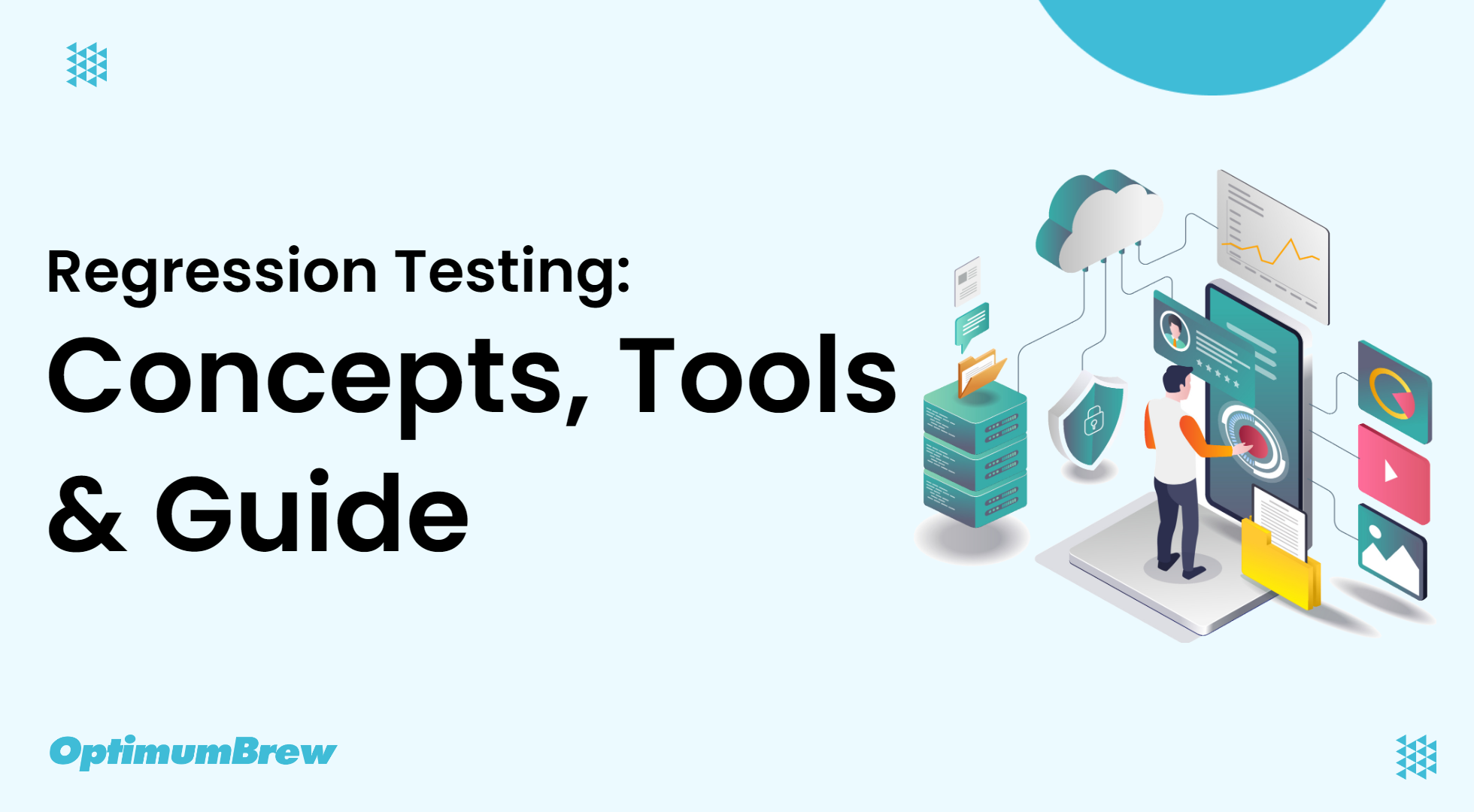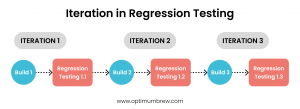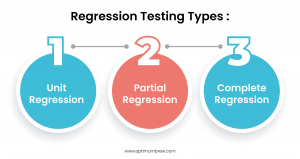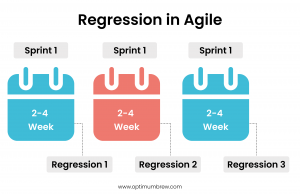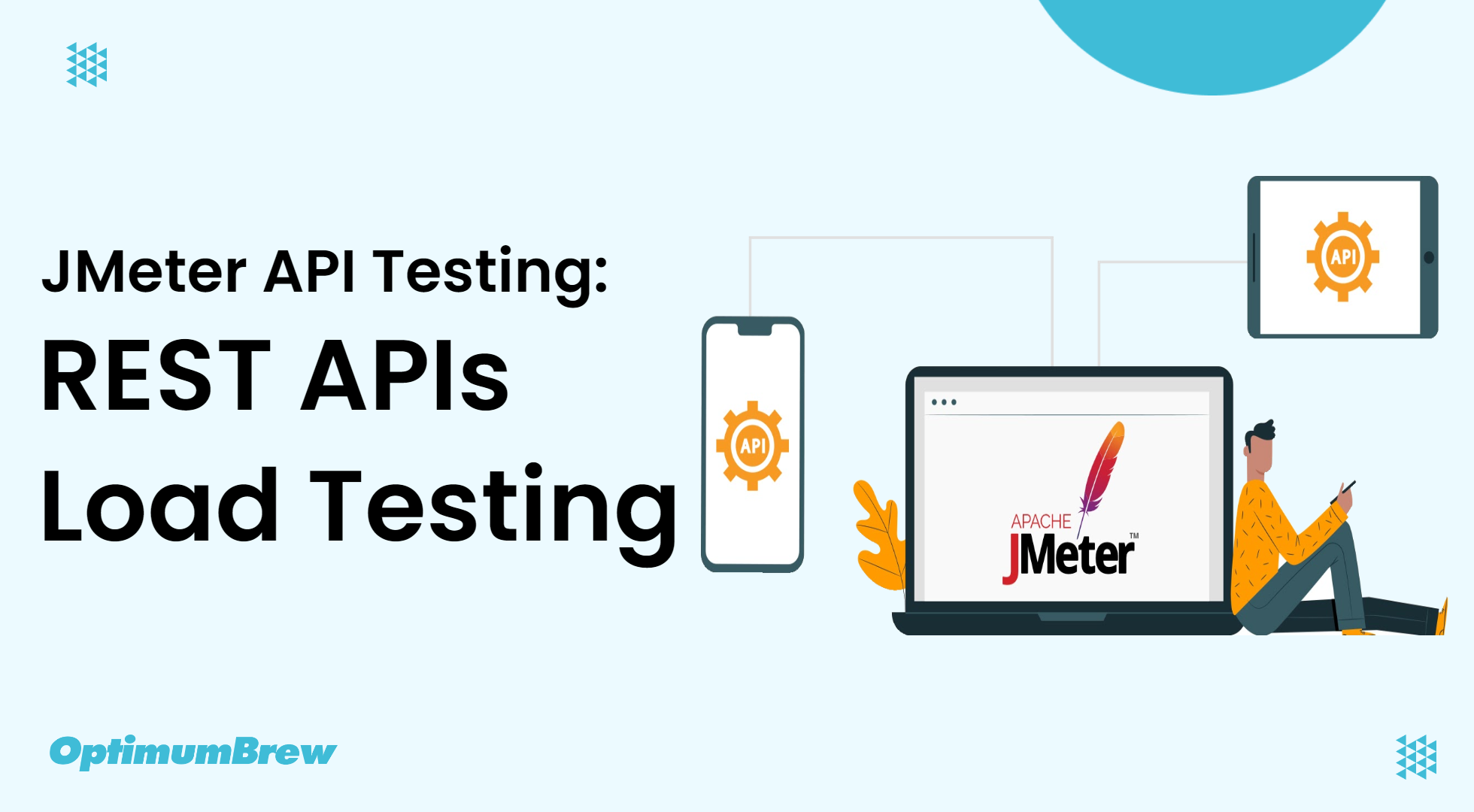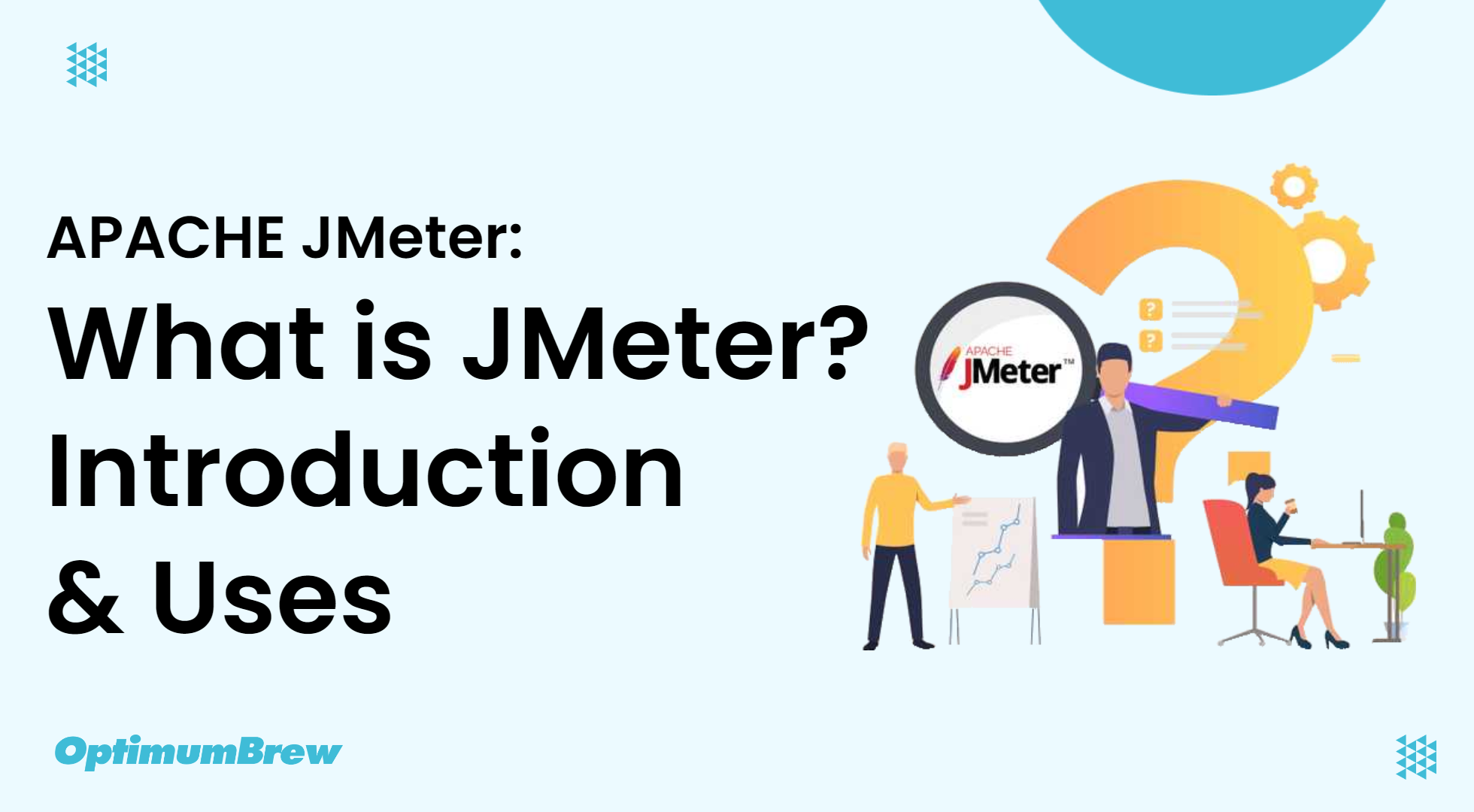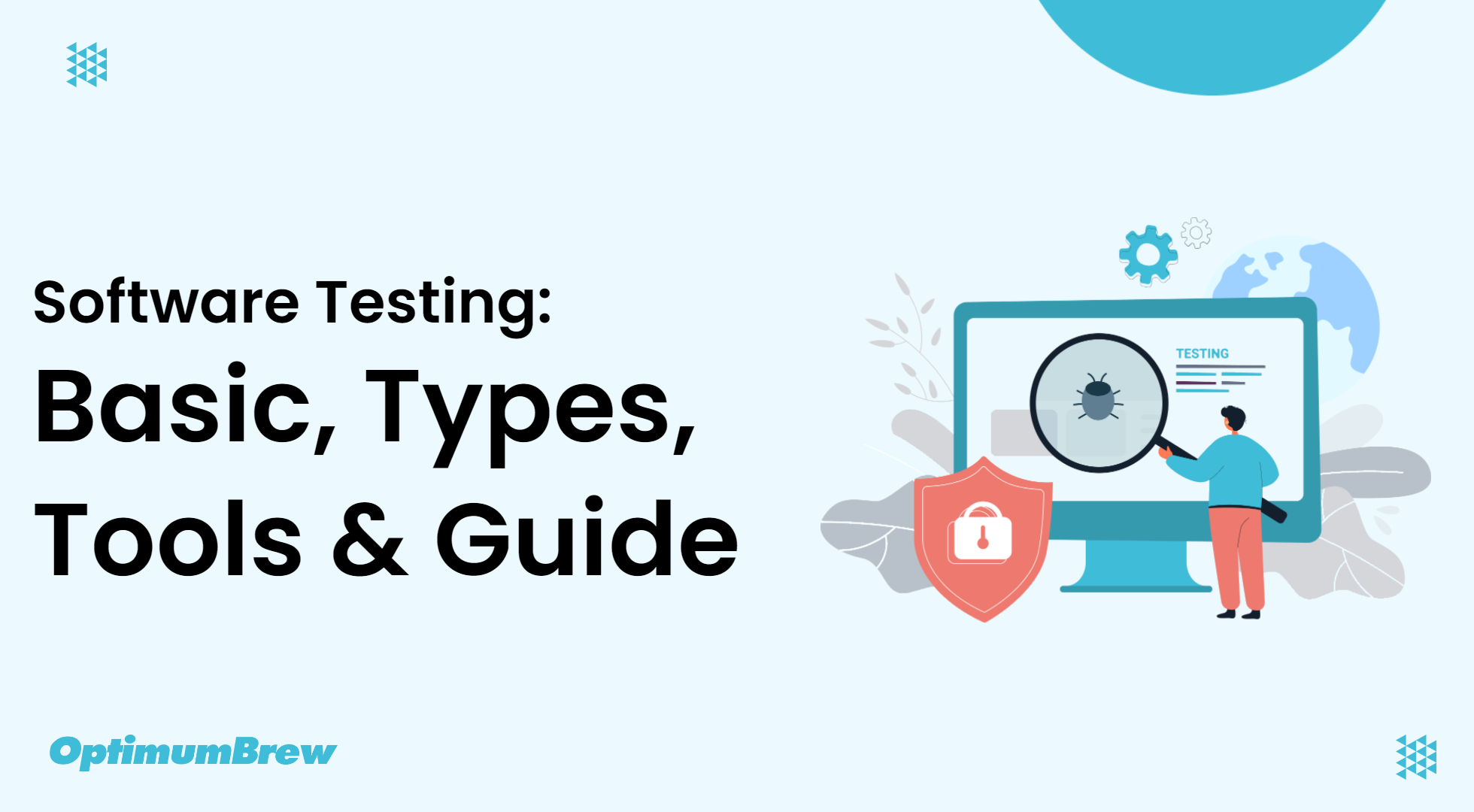In this Regression Testing guide, we will learn what is regression testing and the following.
- What is Regression Testing?
- What are the types of Regression Testing?
- What are the Techniques of Regression Testing?
- How does Regression Testing Work?
- What are the Benefits of Regression Testing?
- Regression Testing in Agile
- What are the Best practices of Regression Testing?
- Difference Between Retesting and Regression Testing
- What are the best Regression Testing Tools?
- Conclusion
What is Regression Testing?
Regression Testing is a process to make changes to an older program and also ensure that the old program still working even after making changes to a program. It is a normal part of software development in larger companies, performed by code specialists. Before the release of a new version of a software product, old test cases run against a new version to make sure that old capabilities are still working.
Example of Regression Testing
Here we are going to have cases to understand the example of regression testing.
Example 1
Consider a Software application with multiple functionalities. Now, there are updates in the source code of that software application, and few changes occur. So after testing the updated changes, all the previously tested functionality needs to be tested again. Testers do it to verify that changes in the code have not affected the previous functionalities.
Regression Testing is not dependent upon any framework or development language. However, the user needs to verify that bug fixes and newly added features do not affect the previous version of the software.
Example 2
Consider that we have a software application with functionality: A1+B1. While testing that application, a bug gets identified. Bug-fixation processes, including few changes in the code, are being carried out to resolve the bug. However, some existing functionality of the software application also gets affected in the bug removal process: B1-A1. Thus, regression testing is carried out to check whether existing functionalities have been affected or not along with the detection of any new bug or issue in the event of changes and bug-fixation.
Further, we can also see that during the upgrade or addition of a new feature; C1, the existing functionalities of the application; A1+B1 have been impacted with the change in the functionality; A1*B1. Here, also regression tests are executed over software applications to find out whether existing functionalities have been affected or not.
This is the most basic example of regression testing. These regression test examples can be further elaborated depending upon the project and its requirement.
What are the types of Regression Testing?
There are three types of Regression Testing.
- Unit Regression
- Partial Regression
- Complete Regression
1. Unit Regression
Unit Regression Testing is done during the unit testing phase and the code is tested as a single unit without any dependencies. Dependencies if any are temporarily blocked to test the unit independently.
2. Partial Regression
Partial Regression Testing means when regression testing is done on a module where the change in the code is related to that particular module and there wont be any change impact on other modules.
3. Complete Regression
Complete Regression Testing means when regression testing is done on a number of modules where the change in the code is related to the other module is uncertain.
What are the Techniques of Regression Testing?
Software maintenance is the process of modifying a software application which includes improvements, bug fixing, deletion of existing features, and optimization. When we do these modifications, the system may work incorrectly. To avoid issues while modifying the code, we do follow regression testing techniques. These techniques help us to eliminate the risks associated with the modifying code.
Following are the various techniques.
- Retest All
- Regression Test Selection
- Test Case Prioritization
1. Retest All
All the test cases in the existing test bucket or test suite are re-executed to verify that there are no bugs that occurred due to the modified code. This is a very expensive method as it needs enormous time as well as resources when compared to the other techniques.
2. Regression Test Selection
By using the regression test selection technique, we select a part of test cases from the test suite to run to verify whether the modified code affects the application or not instead of re-executing the complete test suite. This selection of test cases from the test suite is done on the basis of the modified code. The test cases chosen are categorized into two parts such as reusable test cases and obsolete test cases.
Reusable test cases – Test cases that can be used in succeeding regression cycles.
Obsolete test case – Test cases that cannot be used in succeeding regression cycles.
3. Test Case Prioritization
By using this technique, we select the test cases with high priority first to run instead of a medium and low priority ones. Test case priority depends on its business impact, frequency, and criticality.
How does Regression Testing Work?
It is done manually. However, as application development takes time, more and more functionality keeps increasing the scope of regression; therefore this Testing is executed in an automated way.
While preparing a test suite for regression, consider the following –
- Automate all the test cases of a test suite.
- Update the regression suite whenever required, like if any new defect which not covered in a test case found, update the test case for that issue in a test suite. Perform Testing for a bug and uncover it next time.
- Execute regression test cases, whenever changes made in code, perform bug fixing, new functionality added, and also an enhancement to existing functionality done.
- Create a test execution report which includes the pass/fails status of executed test cases.
What are the Benefits of Regression Testing?
- Change in requirements and code modified according to the requirement.
- New features added to the software.
- Defect fixing.
- Unit testing.
- Schedule a time to test.
Regression Testing in Agile
What are the Best practices of Regression Testing?
To do this testing, select test cases in the best way. Best practices are as follows –
- Test cases that have frequent defects.
- Functionalities that are more visible to the users.
- Test cases that verify the deep /core features of a product.
- Test cases for functionalities that undergo more and recent changes.
- All Integration Test cases.
- All complex test cases.
- Boundary Value test cases.
- A sample of successful test cases.
- A sample of failed test cases.
Difference Between Retesting and Regression Testing
Many people have difficulty understanding the difference between retesting and regression testing. Here we are going to look at the key differences between these two types of testing. But before we move to the difference between retesting and regression testing, let us understand retesting in brief.
Retesting
Retesting is a process to check those specific cases that are detected with bugs in the final execution. Generally, when software testers find bugs in any software application, they assign them to software developers to fix them. Then, software developers fix those bugs and give them back to software testers for verification. This process continues until every bug is fixed and is known as retesting.
Now that you understand both retesting and regression testing, let us dive into their key differences.
Regression Testing vs. Retesting
| Regression Testing | Re-testing |
| Regression Testing is performed for the passed test cases. | Retesting is performed only for failed test cases. |
| Regression testing checks for unexpected side effects. | Regression testing checks the direct fixes. |
| Regression Testing does not include defect verification. | Defect verification is a part of re-testing. |
| Regression testing is ideal for automation as test cases increase with time. | Retesting is not ideal for automation as test cases changes with time. |
| Regression testing is known as genetic testing. | Retesting is known as planned testing. |
| The purpose of regression testing is to check whether a recent code change has not affected the other existing features. | The goal of retesting is to check that failed test cases in final execution are fixed or not. |
| It involves the general area of software. | It involves the specific feature of the software. |
What are the best Regression Testing Tools?
If your software undergoes frequent changes, then regression testing costs will be very high. In such cases, using manual testing can increase test time as well as costs. However, automated regression testing is an intelligent choice in such situations.
Automaton testing is an area where we can reduce the efforts by using automated regression testing tools. It is an efficient as well as time-saving method. At the same time, the extent of automation depends on the test cases that will remain re-usable over time.
Most of the regression testing tools available in the market are record and playback types. Selecting a proper testing tool is necessary to maintain the quality of software.
Here is the list of top regression testing tools:
- Selenium
- IBM Rational Functional Tester
- Micro Focus Unified Functional Testing (UFT)
- Watir
- SilkTest
- TimeShiftX
- Sahi Pro
These are the standard tools for functional and regression testing. Here is a brief about the list of the most famous regression testing tools.
Conclusion
It is one of the most critical aspects of Testing as it helps to deliver a quality product, providing ensure that change in code, whether it’s small or large, should not affect the existing or old functionality. A large number of available automated tools help in the automation of a regression best test case. A tool should have the ability to update a test suite, as the Regression test suite needs to be updated frequently.





